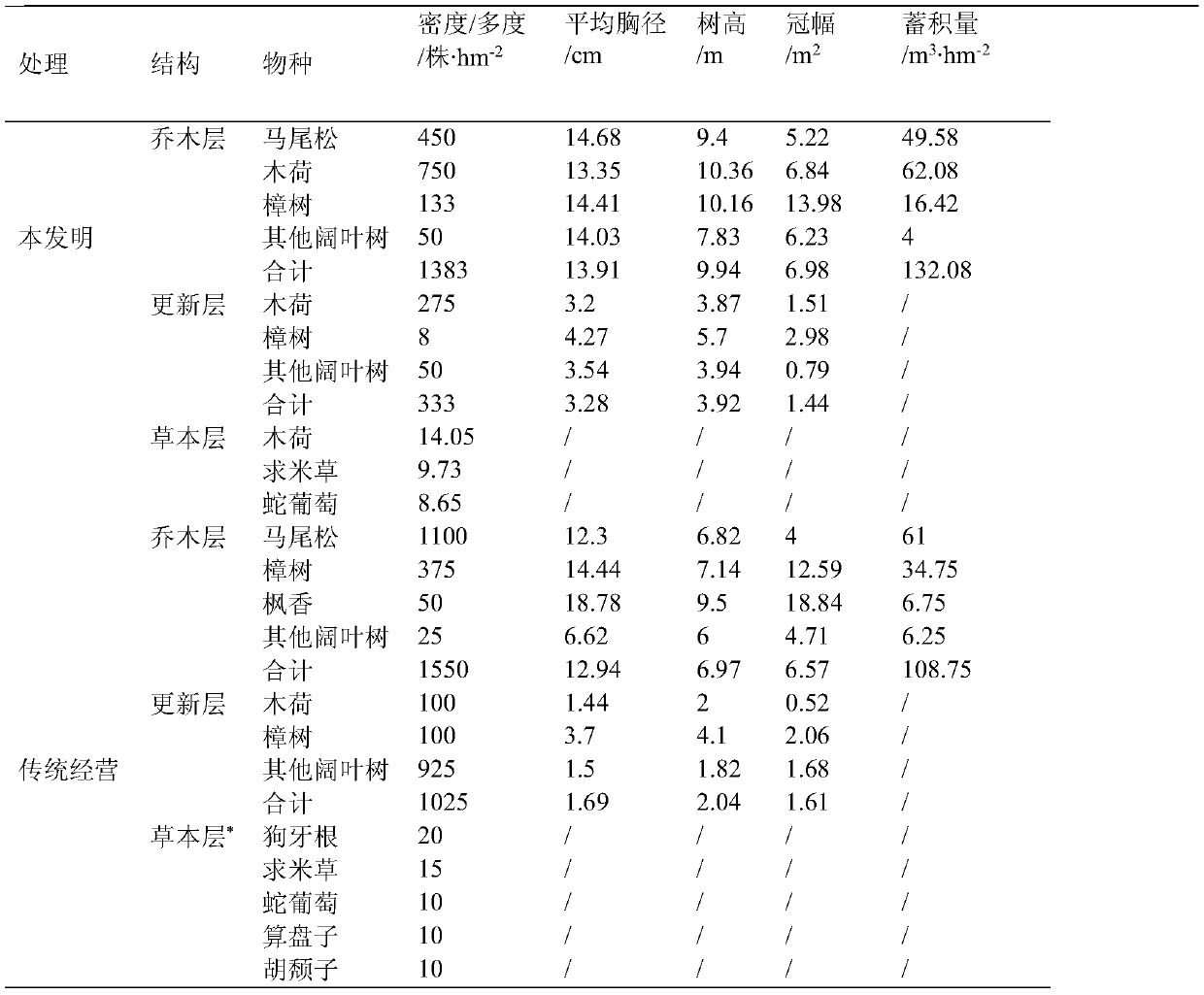A rapid broad-leaf transformation method for degraded pine forests on East China Sea islands
A pine forest and broad-leaved technology, which is applied in the field of rapid broad-leaved transformation of degraded pine forests in the East China Sea, can solve the problems of lack of management technology, slow recovery, and desolation of stands, so as to improve stand quality, promote rapid recovery growth and Effects of development, broad application prospects
- Summary
- Abstract
- Description
- Claims
- Application Information
AI Technical Summary
Problems solved by technology
Method used
Image
Examples
Embodiment Construction
[0018] Below in conjunction with embodiment the present invention is further described.
[0019] The implementation site is located on the coastal slopes and ridges of the purple bamboo forest in Putuo Mountain, Zhoushan City, Zhejiang Province, at an altitude of 50m, with a slope facing southeast and a slope of ≤15°. In the early stage, it was an artificial masson pine and black pine middle-aged forest, a pure forest with a canopy density of 0.7. In 2005, it suffered from pine wood nematode pests and diseases.
[0020] Sanitary felling and tending of degraded masson pine forest and black pine forest on Zhoushan island to transform it into the target construction species of Schima superba;
[0021] According to the law of succession of potential plant communities, determine the tree species to be transformed, and select zonal broad-leaved trees such as Schima superba and Machilusthunbergii as the target tree species; in the winter of 2007, the pine forest will be sanitized and...
PUM
 Login to View More
Login to View More Abstract
Description
Claims
Application Information
 Login to View More
Login to View More - R&D
- Intellectual Property
- Life Sciences
- Materials
- Tech Scout
- Unparalleled Data Quality
- Higher Quality Content
- 60% Fewer Hallucinations
Browse by: Latest US Patents, China's latest patents, Technical Efficacy Thesaurus, Application Domain, Technology Topic, Popular Technical Reports.
© 2025 PatSnap. All rights reserved.Legal|Privacy policy|Modern Slavery Act Transparency Statement|Sitemap|About US| Contact US: help@patsnap.com

